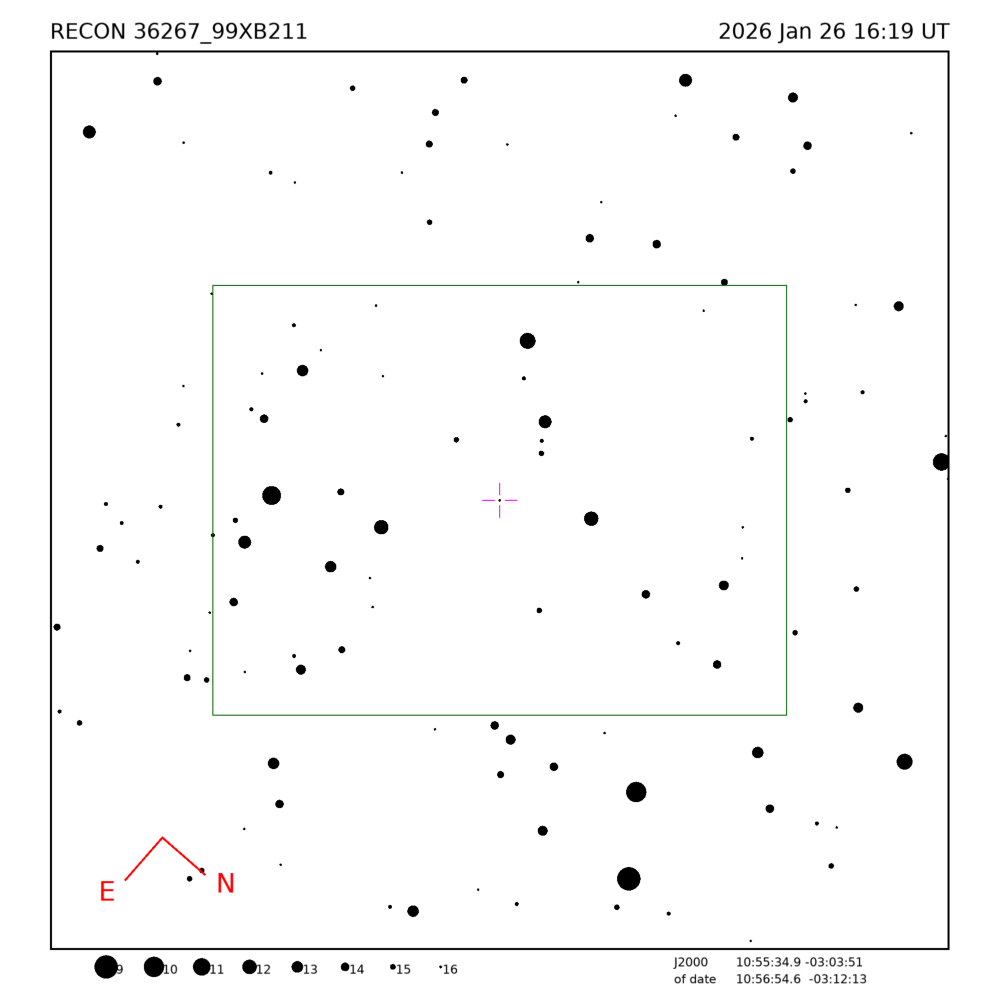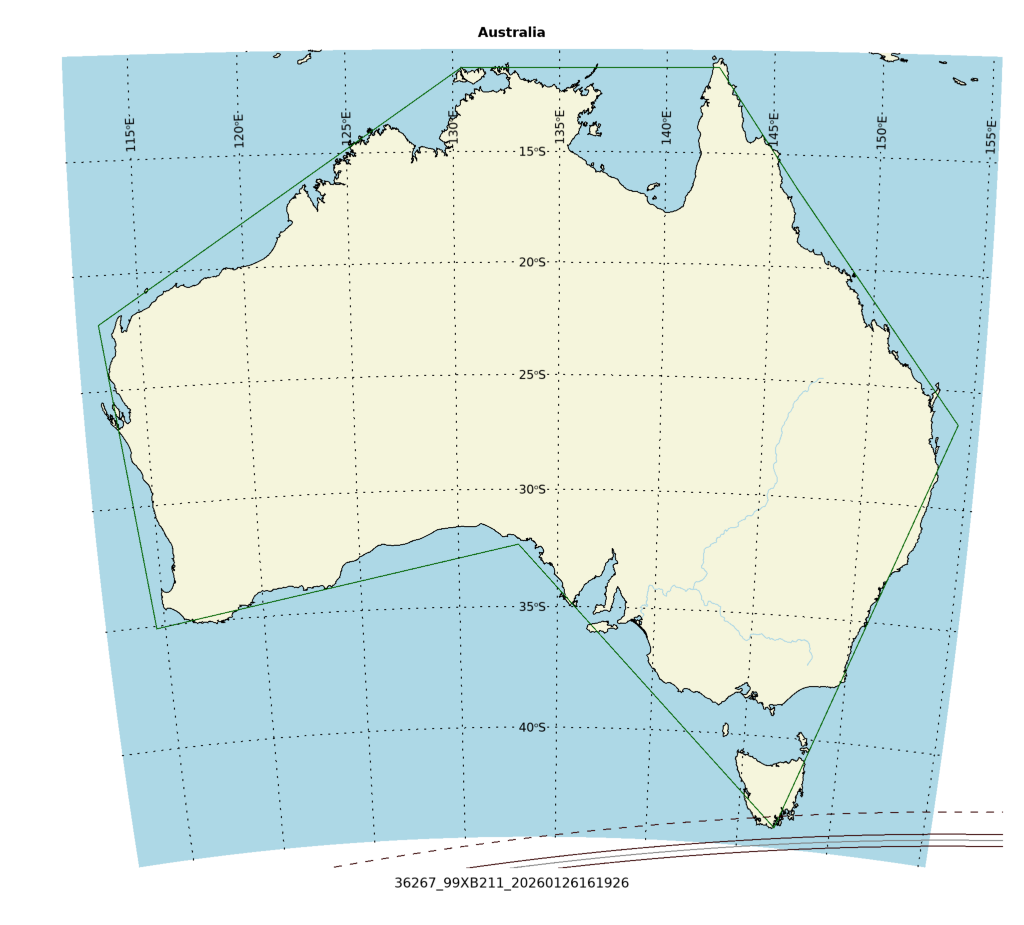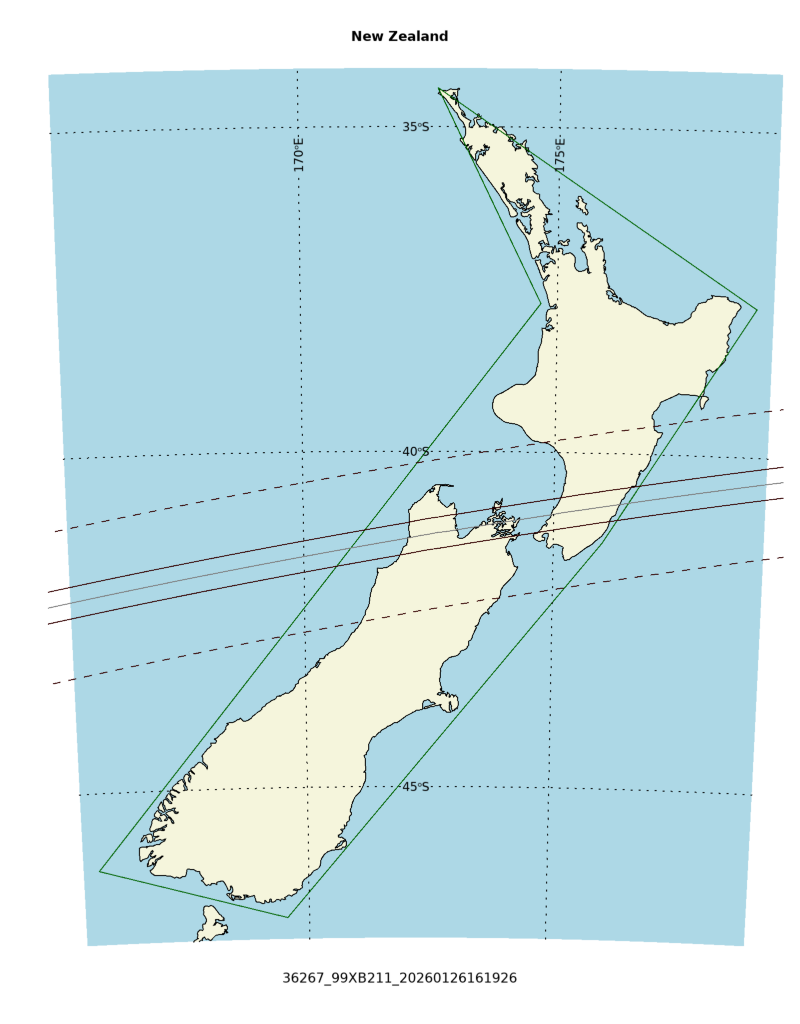
Occultation event with (36267) 99XB211, event index number 3173
Regions able to see the event: Australia,NZ
Geocentric closest approach at 2026/01/26 16:19:26 UTC
J2000 position of star is 10:55:34.9 -03:03:51
Equinox of date position of star is 10:56:54.6 -03:12:13
Star is 124 degrees from the moon. Moon is 56% illuminated.
Stellar brightness G=16.4, apparent brightess of occulting body is G=16.3
Use an exposure time of 0.85 seconds with the standard RECON-QHY system.
SNR of 3.0 per integration for unocculted signal
Expected flux drop is 47% with SNR of 1.4 for the occulted depth (per occulted point)
Apparent velocity is 13.4 km/sec on the sky relative to the star, or, 13.7 arcsec/hr.
Position angle of asteroid motion is 83.1 degrees
The recommended exposure time corresponds to 11.4 km per image.
The 1-sigma error in the time of the event is 1.2 seconds.
The 1-sigma cross-track error in the shadow position is 24.8 km.
The sky-plane scale is 3523.9 km/arcsec.
Diameter estimates:
42.5 km assuming a 5% albedo, maximum of 3.2 sec for a central chord
17.3 km assuming a 30% albedo, maximum of 1.3 sec for a central chord
Cross-track diameter of 39.4 km used for deployment plan.
Star training set for 36267_99XB211, (2026/01/26 16:19UT) Object RA Dec mag sep mel Regulus 10:09:45.5 +11:50:20 1.3 19.07 107 PPM 178324 10:55:03.3 -02:16:06 6.3 1.04 123 PPM 178334 10:57:18.3 -03:01:59 8.7 0.20 124 36267_99XB211 10:56:54.6 -03:12:13 16.3 124 Positions are for equinox of date



Star training set for 36267_99XB211, (2026/01/26 16:19UT) Object RA Dec mag sep mel Regulus 10:08:21.9 +11:58:02 1.3 19.07 107 PPM 178324 10:53:43.5 -02:07:45 6.3 1.04 123 PPM 178334 10:55:58.7 -02:53:36 8.7 0.20 124 36267_99XB211 10:55:34.9 -03:03:51 16.3 124 Positions are for J2000